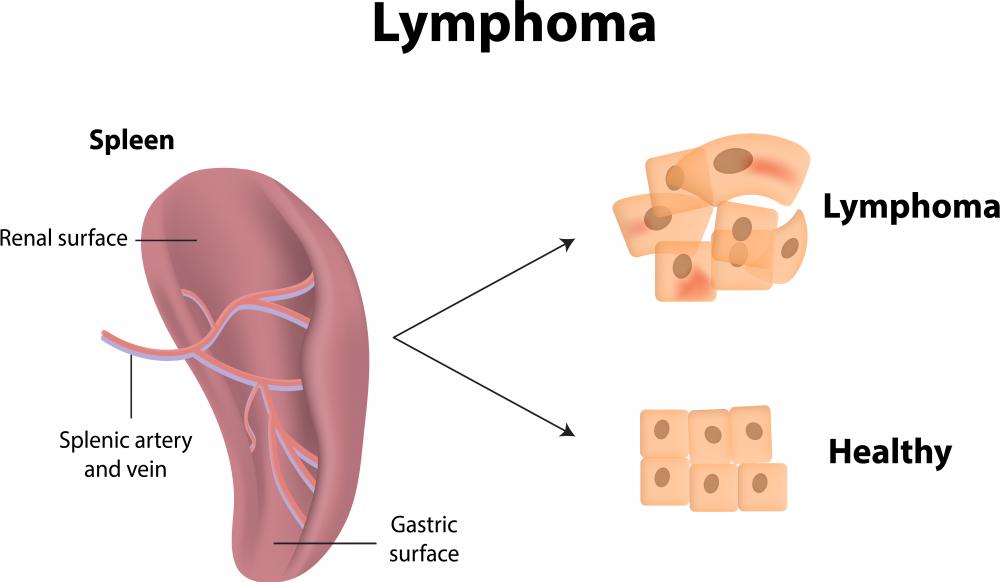At WiseGEEK, we're committed to delivering accurate, trustworthy information. Our expert-authored content is rigorously fact-checked and sourced from credible authorities. Discover how we uphold the highest standards in providing you with reliable knowledge.
What is Cutaneous T-Cell Lymphoma?
Cutaneous T-cell lymphoma is a disease that affects the immune system. It is considered a cancer and it is a non-Hodgkin’s type of lymphoma. Mutations occur with the T-cells, which typically move to the outer layers of the skin. Rashes and eventually tumors can be seen on the skin, which are tell-tale signs of a mutated cell migration. Cutaneous T-cell lymphoma can easily spread to nearby tissues, resulting in tumor formation in other areas of the body.
The only way to properly diagnose this disease is to take a biopsy of the skin. A skin sample is then placed under a microscope to check for cell mutations. Although this disease has no cure and there is a risk of it spreading to other areas of the body, it does not easily progress. Only a small portion of people who have this condition will develop tumors. Cutaneous T-cell lymphoma has four stages that can indicate how far the disease has progressed.

Stage one of cutaneous T-cell lymphoma consists of a rash that is similar to eczema or psoriasis. It may also be extremely itchy and scaly. During this time, the T-cells have not produced any tumors. With stage two and stage three lymphoma, the skin is still scaly and red but a swollen lymph node can also be seen on the neck or groin. The worse case scenario of cutaneous T-cell lymphoma is stage four, which means there are obvious changes to the skin and cancer cells have been found in the lymph nodes as well as in certain organs.

There are a variety of treatments for cutaneous T-cell cancer. Chemotherapy consists of addressing the cancer cells with drugs that enter the bloodstream. These drugs fight the offending cancer cells. Radiation therapy can eradicate cancer cells by sending a beam of radiation that helps to shrink or stop the tumors from growing. Phototherapy uses a combination of drugs and ultra violet light to kill the cancer cells.

Other types of therapies can be used for cutaneous T-cell lymphoma, all of which depends on the progression of the disease. Clinical or newer technologies are also being used to combat this type of cancer. They can be used alone or along with a conventional treatment. The health of the patient can also be a contributing factor when choosing a treatment option.
AS FEATURED ON:
AS FEATURED ON:















Discuss this Article
Post your comments